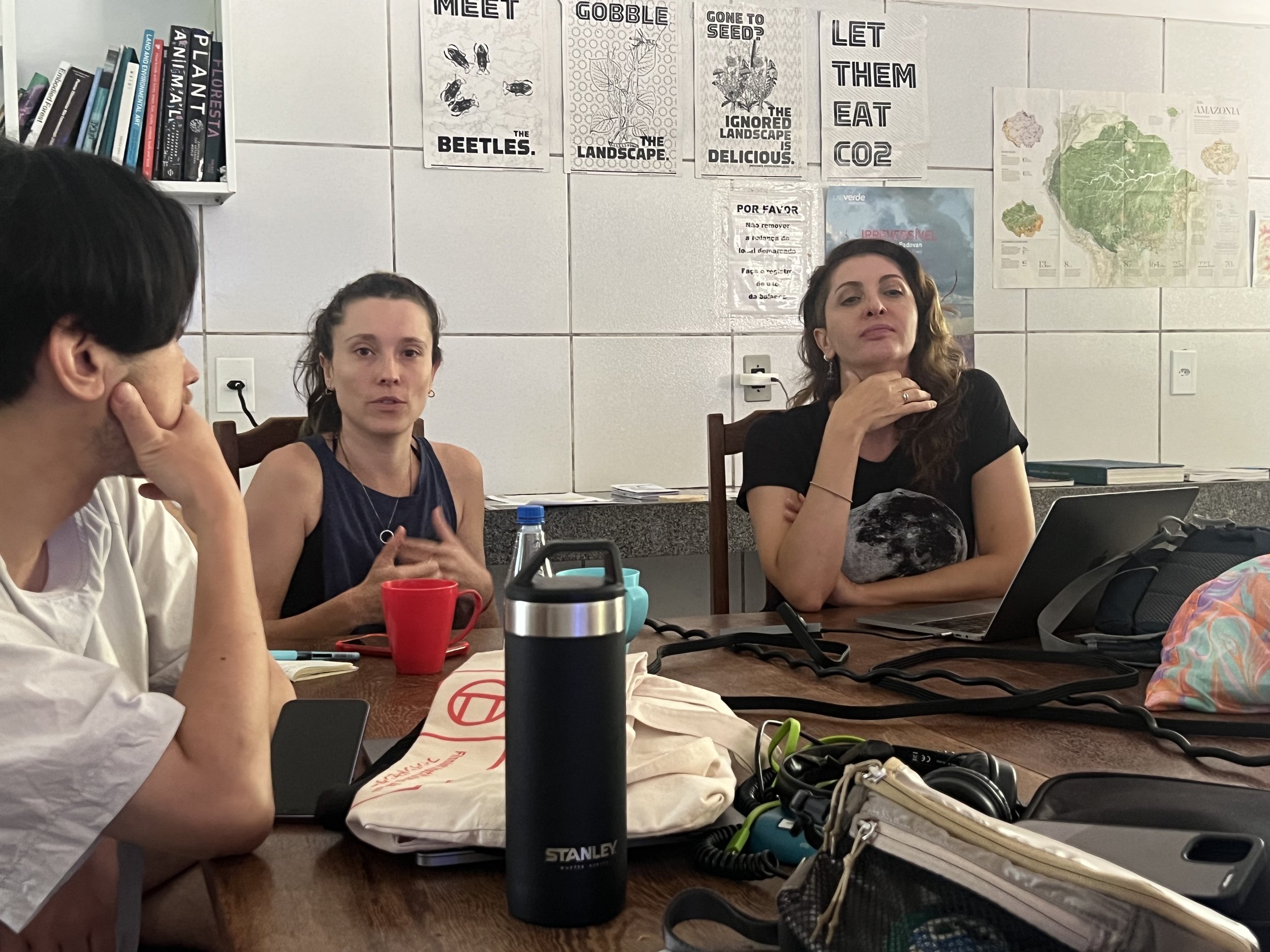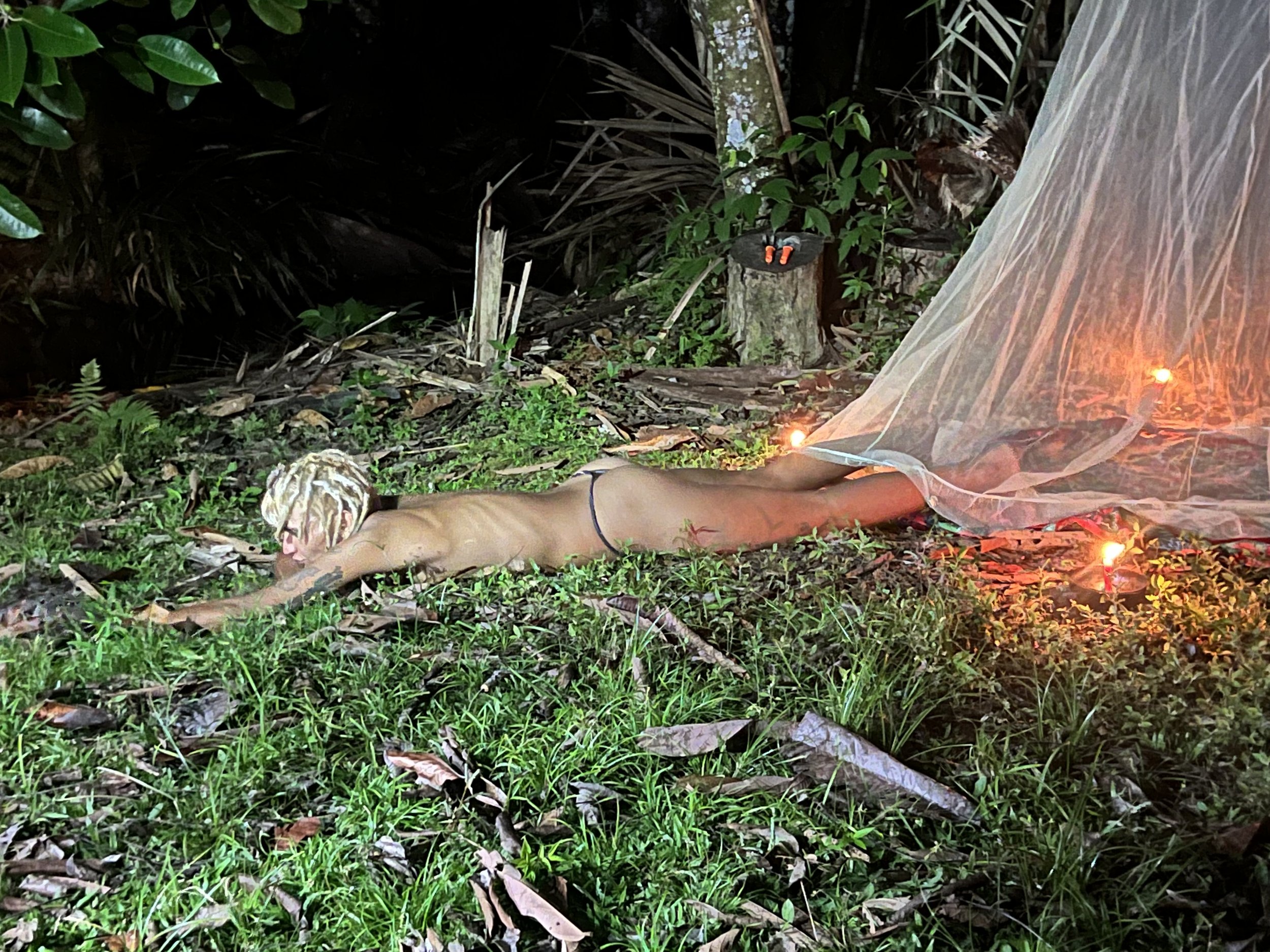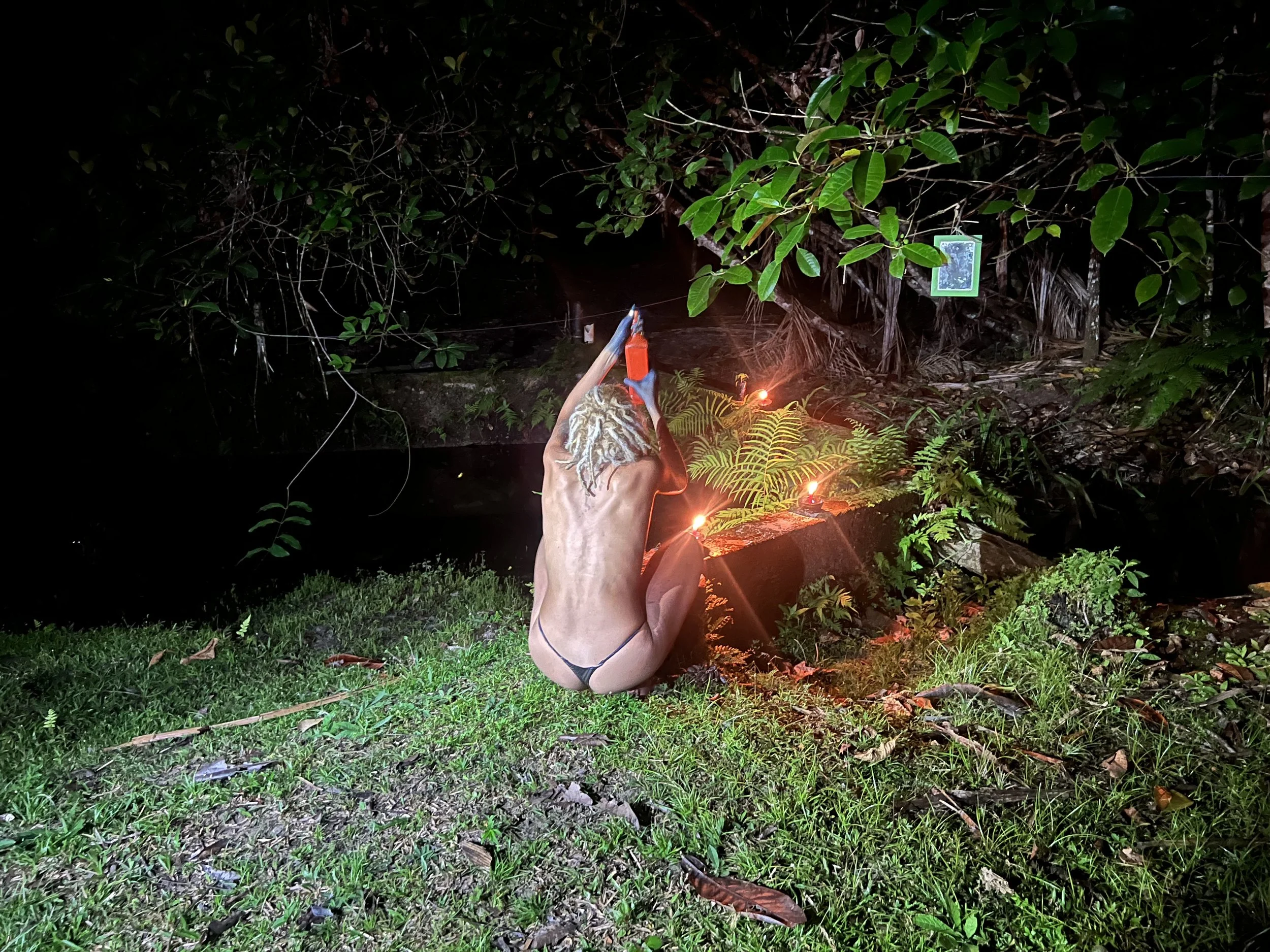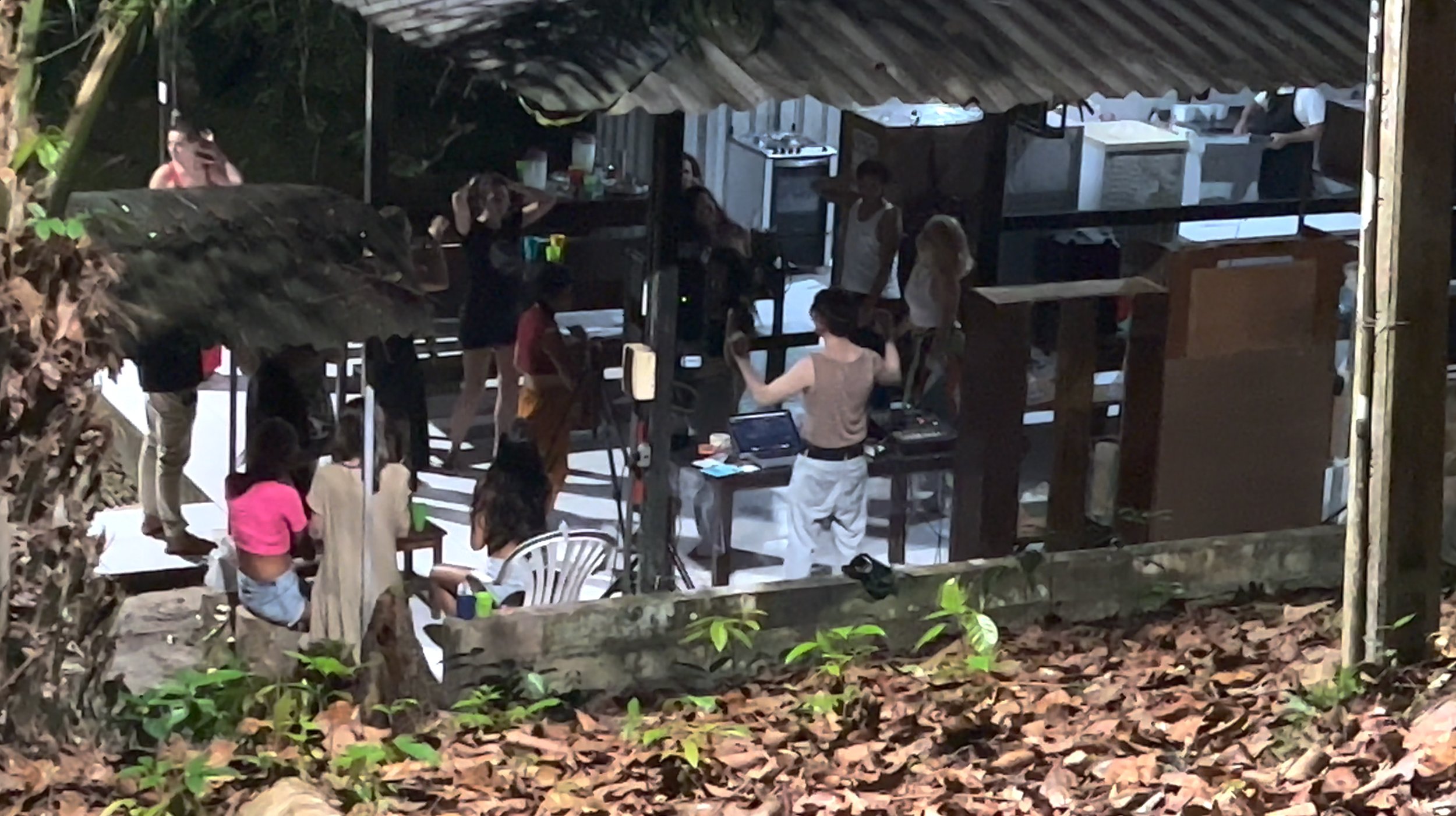On the morning of our fifth day, LABverde’s inspiring director Lillian Fraiji gave us a talk titled “Speculative Ecologies.” Lilian broke the concept down into three categories. She spoke about the imagery, art, and nature of the Amazon, referencing artworks by past LABverde residents alongside texts by Margaret Atwood and Octavia Butler. Lilian talked about dystopian reality and questioned how we, as artists, can speculate about ecology in the present, and how we can be more open to unexpected possibilities. She asked us to consider in what form the Amazon exists for each of us personally, and how we might be connected to it through our souls and our breath.
She spoke about the concept of humidity, of water, sky, and rivers, and the Amazon’s special identity as the largest water basin in the world. All water is recycled in the forest, going into the sky, towards the Andes, and moving east again as rain.
Lilian broke down post-colonial history of the Amazon region into four sections:
1) 1500-1900: Expeditionary travel
2) 1900—1964: Cycles of Modernity
3) 1964-1985: Military Dictatorships
4) 2018-NOW
I found her description of the dictatorship period to be the most moving. That was when the government started building highways into the forest, invading the Amazon in an attempt to join east to west and north to south. I actually did a suite of paintings (Roads to Ruin) about BR-163 which speaks to that.
Luckily there are no roads into Manaus, which helps protect the forest. But just north, in Presidente Figuereido, one of the biggest environmental disasters in the area did take place: the horrendous Balbina Dam disaster, which I’ll talk about in a later blog post.
The last part of Lilian’s presentation was devoted to a great inhouse film provided by the cosmetic company Natura whose world headquarters are located in São Paulo. They describe themselves this way: Since 1969, Natura’s reason for being has been to create and sell products and services that promote the harmonious relationship of the individual with oneself, with others and with nature.
And true to this sentiment they sponsored all of the local participants in our 2023 residency program. Several members of the company also participated in the whole experience. It was a delight to be with Ana Julia Novaes (my roommate on our boat trip), Bruna Coletti and Renan Neiva who I hope to see them later on at their headquarters in São Paulo.
The rest of our day was spent mostly in free time as each of us were working on our projects, transferring photos and studying in our reading room. We did go on an hour-long walk with a wonderful indigenous guide, Kapiro Apurinã who was born in the forest as part of the Taura-mirin community by the Purus river in the state of Amazônas.















